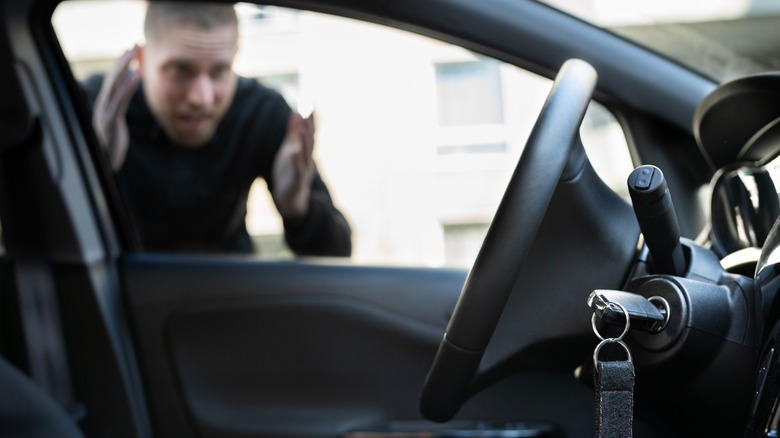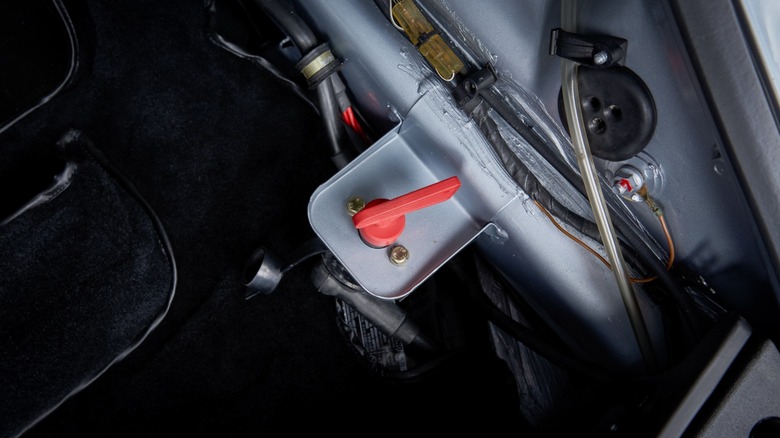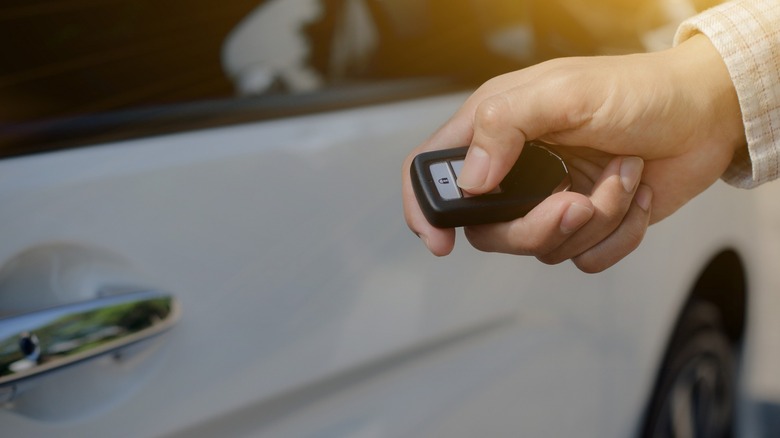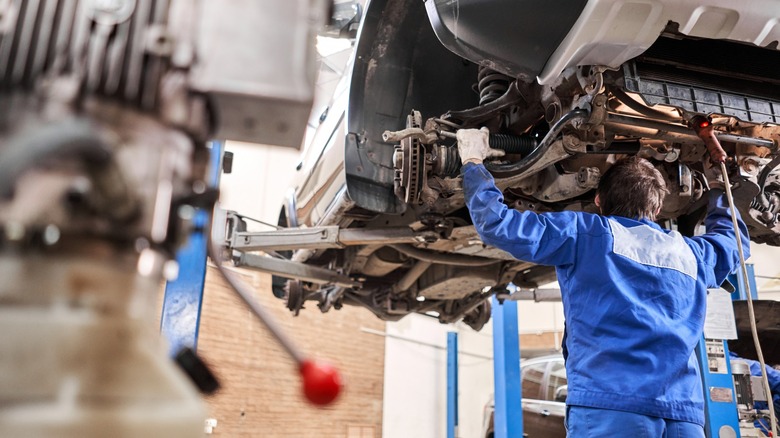What Is A Kill Switch? And Why You Might Want One On Your Vehicle
According to the National Insurance Crime Bureau, 2022 saw a 7% increase in vehicular theft, bringing the total to more than 1 million. That's a statistic you should consider when deciding if you want to install a kill switch on your vehicle.
Of course, that may seem extreme. You may not know precisely what a kill switch is or the role it can play in preventing vehicular theft. As the name implies, a kill switch is designed to essentially "kill" a critical component of your vehicle. Whereas door locks and steering-wheel locks are more passive in preventing vehicular theft and therefore less foolproof, a kill switch is an active and efficient deterrent that doesn't allow the vehicle to be driven. It's also a fantastic addition to older vehicles that may not have security features.
While the idea behind a kill switch is fairly simple, different types can be installed in virtually any car. As vehicles were being stolen at an estimated rate of one every 32 seconds in 2022, it may be worth considering installing a kill switch and learning the available options, especially if you live in high-theft states like California or Washington.
Manual kill switches
While kill switches essentially serve the same purpose, different types of switches shut down vehicle operations in different ways. The most common areas targeted by kill switches include the fuel system, battery, ignition, and fuse box, all of which are manually activated by the owner when the vehicle is not in use.
Fuel-Line Kill Switch
One of the most efficient ways to kill a vehicle is to ensure the engine receives no fuel to run. The fuel-line shutoff keeps the engine cranking but doesn't provide it with the fuel needed to run the car.
Ignition Wire Switch
Like the fuel-line kill switch, the ignition wire switch disrupts a crucial flow needed to start the engine. When turned on, the hidden switch cuts the electrical current that would typically activate the ignition and turn the engine over.
Car Battery Disconnect Switch
With this kill switch activated, thieves will be left to assume the car battery is dead. The switch simply cuts the current from the battery, interrupting the flow of power needed to run your car.
Fuse Box Kill Switch
Not too dissimilar to the ignition kill switch, the fuse box also disrupts the electrical flow but does so at the fuse box of the car. Since it's added as part of the fuse box, the kill switch is a little more discrete than others, and since it simply doesn't let the car turn over, it's not easy for thieves to determine the issue.
Remote-controlled switch
If a thief is actively watching a vehicle, there's a chance they may spot the owner activating a manual kill switch. It may be a rare scenario, but it's enough of a possibility to consider a more convenient and elaborate remote kill switch.
Similar to the battery disconnect switch, the remote control switch kills the current from the battery, preventing the power needed to start the ignition. The difference from the manual method is that the user doesn't have to be near the car to activate it. Using a paired key fob, the kill switch can be activated and deactivated from a distance, enhancing the security of the kill switch.
Unlike manual switches, this switch can be activated instantly in the event of suspicious activity. If you spot people scoping out your car, one press of the fob will render the vehicle useless should they attempt to steal it.
Can you install your own kill switch?
Technically, you absolutely can install any of the above kill switches on your car. The real question is, are you comfortable doing so? If you consider where these switches are installed, any wrong move or improperly placed component can render your vehicle unusable regardless of whether the switch is activated or not. Unless you have a background in car repair, it may be best not to risk it.
When dealing with your car's fuel lines, ignition, battery, and electrical wiring, you can never be too careful. Though having your kill switch installed by a professional can increase the price considerably, with some installs running a few hundred dollars, the peace of mind is well worth it. For a professional installation, you'll provide the switch so you can shop for the price and style you're most comfortable with.
Manually operated switches can start at $10, and you can grab a remote battery disconnect switch from Walmart for as little as $35. It's a small price to pay to know that your car is much safer than if you relied on the manufacturer's alarm.
What are government-controlled kill switches?
Chances are, in your search for information on kill switches, you came across kill switch laws. This may have led you down the rabbit hole of government-controlled kill switches, which became a hot topic when Wyoming's U.S. House representative, Harriet Hageman, tried to kill funding for a federal regulation that requires passenger vehicles manufactured after 2026 to include a kill switch.
According to Hageman, the law would lead to "an invasion of privacy" as the switches would include tracking capabilities that government sectors could abuse. The mandate is intended to detect impairment based on driver performance or integrate systems that can directly detect blood-alcohol concentration and shut the vehicle down when above the legal limit.
While similar in concept to a standard kill switch, the previously discussed methods are entirely separate from these government-controlled switches. While the mandated devices addressed by Hageman may replace future, more advanced kill switches, the current methods are practical, manually adjusted switches designed solely to prevent vehicle theft.
Since they don't require an external connection and collect no data, there's no risk of outside interference or influence.




